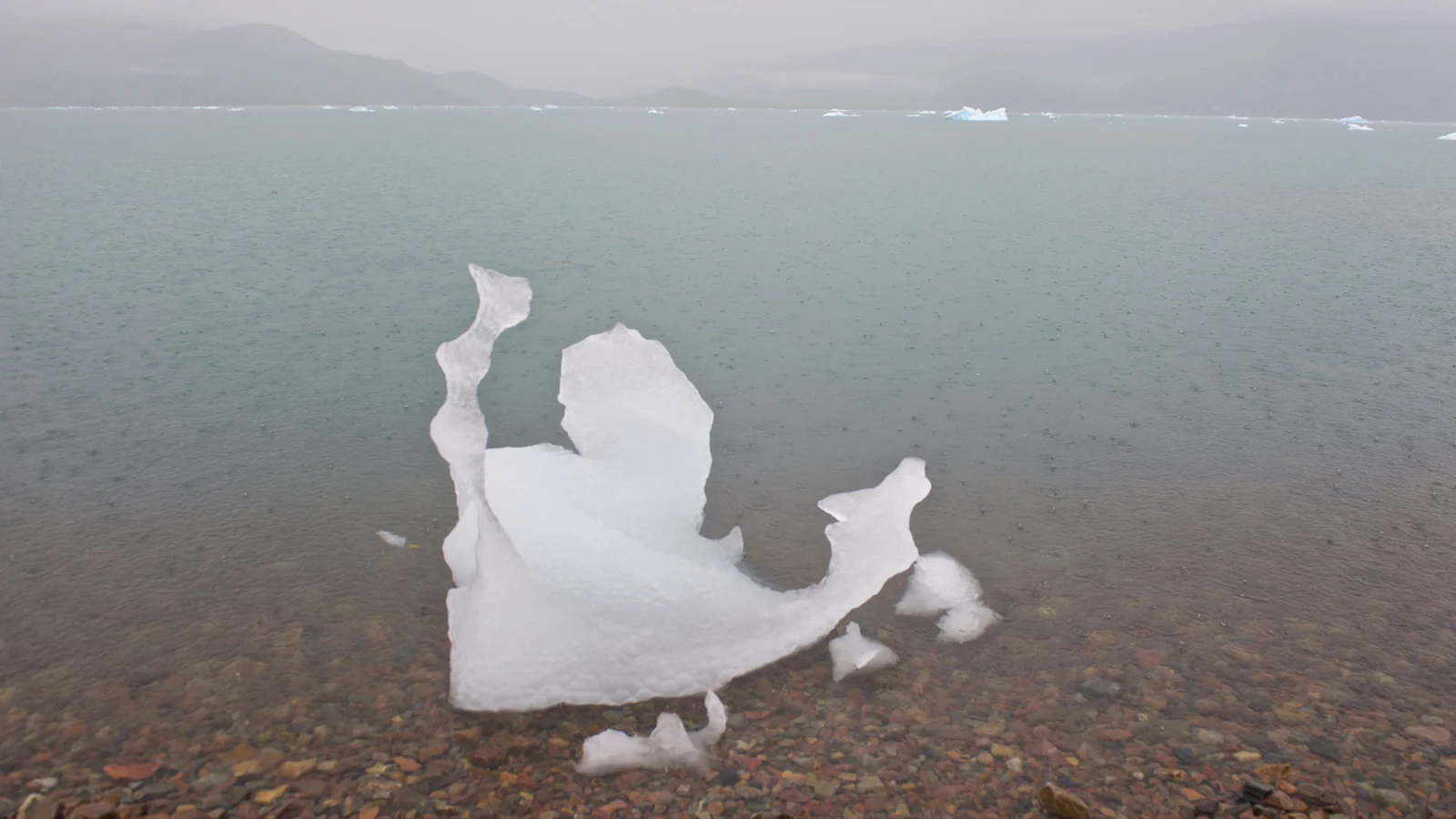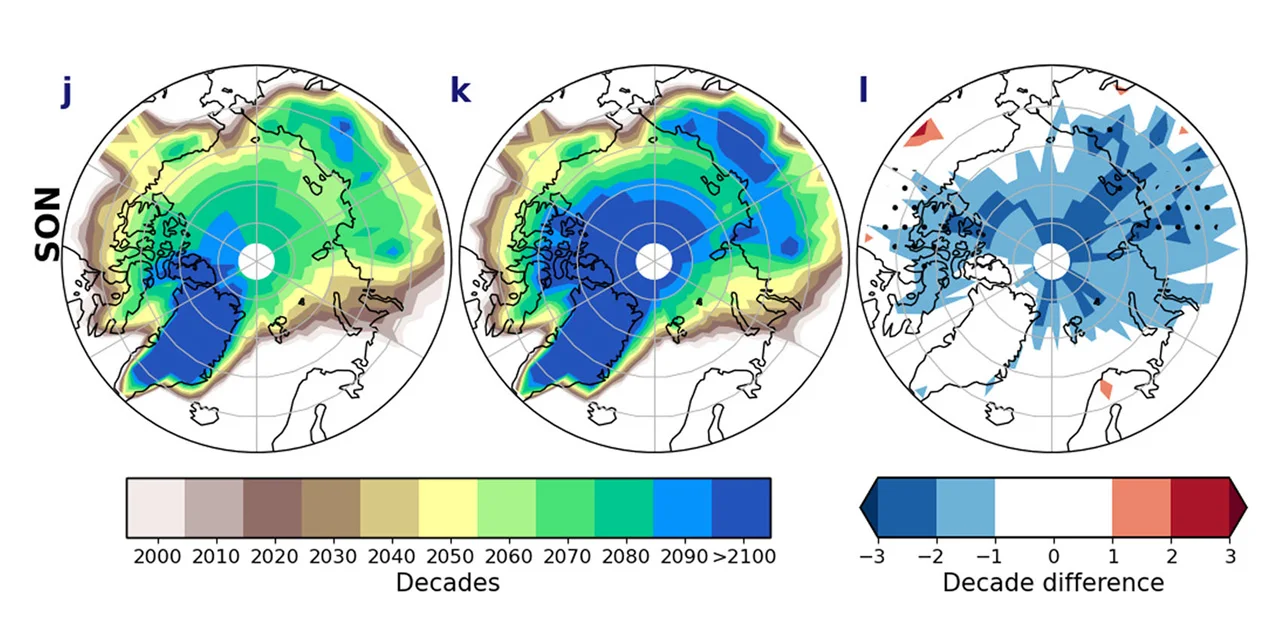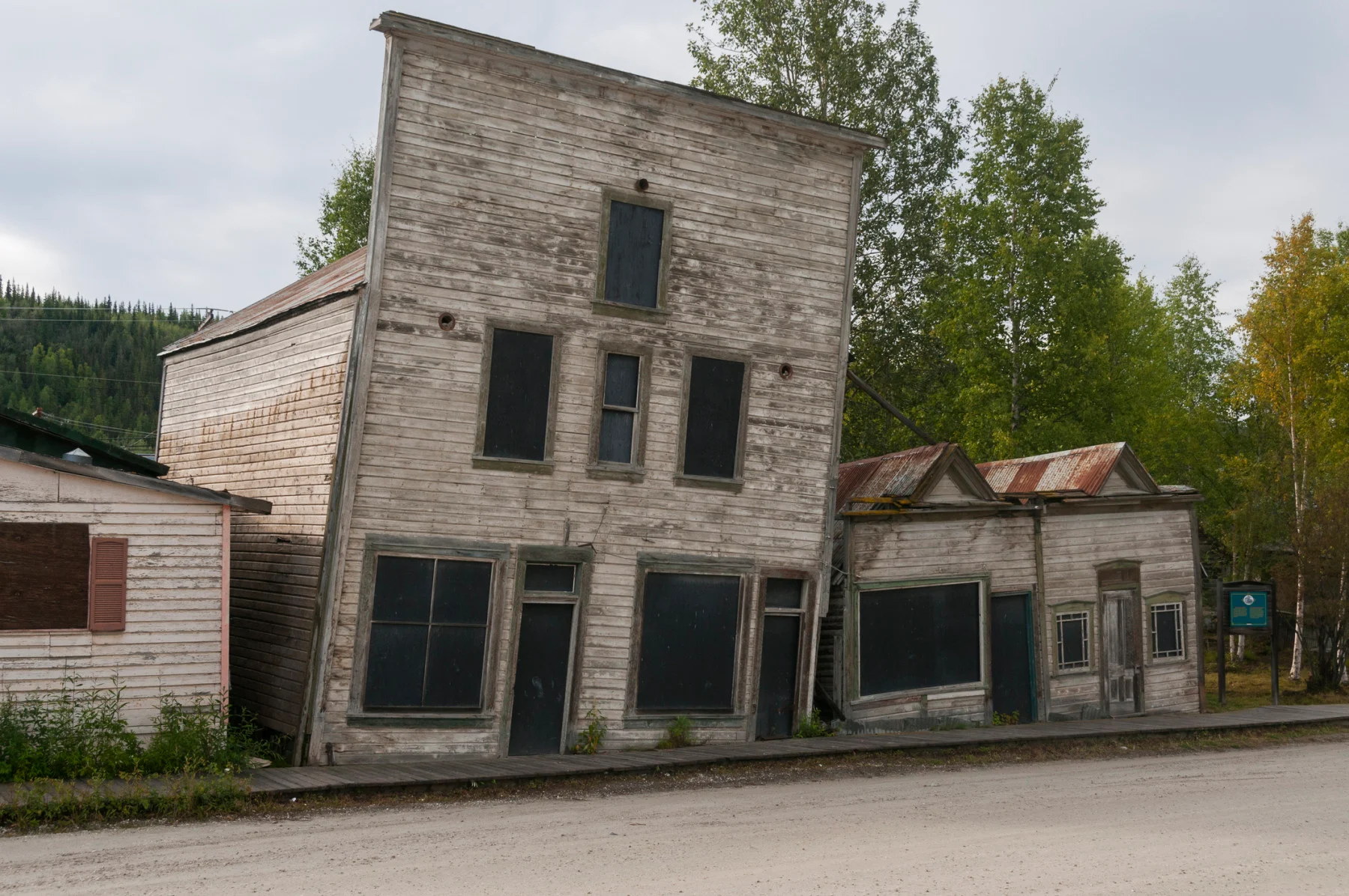
Future Arctic will see more rain than snowfall, and sooner than we once thought
New, state-of-the-art climate models reveal that the future Arctic will be wetter, with more rain during the year than snowfall, and this switchover will happen decades earlier than previously indicated.
The Arctic is warming fast enough that we are beginning to see rain fall where it has never done so before in recorded history. Now, new climate models are projecting that rainfall is expected to become the dominant form of precipitation in the Arctic, and sooner than we thought.
Global temperatures have risen, on average, by a little over a degree Celsius since the start of the Industrial Revolution. The Arctic, however, has warmed at twice that global rate in that same time period. As a result, we are seeing unprecedented loss of sea ice and glaciers, communities are in danger due to melting permafrost, and in August of this year, a weather station located at the summit of Geenland's ice sheet recorded rain for the first time ever.
As the globe continues to heat up, Arctic warming will continue to outpace the rest of the world. With even greater losses of ice, larger regions of glacier and permafrost melt, and more open ocean surface, this will mean more water vapour evaporating into the warmer Arctic air. In turn, this will increase the amount of water available to form into clouds and precipitation, thus producing more snow and rain across the Arctic.
According to a new study, the most up-to-date climate model projections are revealing that this increase in precipitation will mainly be in the form of rainfall. In fact, by the end of this century, rain will replace snow as the most common form of precipitation in the Arctic. Depending on the season, we could actually see this shift happen even faster — in as little as 30 years from now.

An ice-sculpture in the rain on the coast of Qassiarsuk. This was once a much, much bigger piece of ice, possibly an iceberg, but it has melted to about one meter in height. Credit: Education Images/Universal Images Group via Getty Images
"The fact that we're getting rainfall on the summit of Greenland right now, and that we're maybe going to get more rainfall into the future — it kind of staggers me," Michelle McCrystall, the lead researcher from the University of Manitoba's Centre for Earth Observation Science, stated in a press release. "And when we talk about this happening in 2100, it seems like such a long time away, but it's only 80 years. That's the next generation. And if we continue the trajectory that we're going, a lot of issues might happen even faster than what we've projected."
The study has stated, even now, the Arctic gets a mixture of rainfall and snowfall throughout the year. In winter, snowfall accounts for about 85 to 90 per cent of precipitation, with rainfall making up the rest. In spring, the ratio is around 80 per cent snow to 20 per cent rain. In summer, precipitation is already predominantly rain, with only around 30 per cent falling as snow. Finally, in autumn, the percentage of snowfall jumps back up to around 70 per cent.

These four graphs from the study show the gradual changeover from snowfall to rainfall in the Arctic by the year 2100, for the four meteorological seasons (winter = DJF, spring = MAM, summer = JJA, and autumn = SON). Together, the four show a switch to predominate rain by the end of the century, with the most dramatic changes in the autumn. Credit: McCrystall, et al., 2021/Nature Communications
As shown in the above graphs, by the year 2100, rising temperatures will bring about some significant changes to these snowfall ratios. For winter, spring, and summer, the amount of snowfall drops by around 20 per cent per season, with a corresponding increase in the amount of rainfall. The most dramatic change will be seen in autumn, though. The current 70 per cent snow to 30 per cent rain ratio is expected to flip by the end of the century. In other words, only 30 per cent of precipitation across the Arctic from September to November will fall as snow, while 70 per cent will fall as rain.
Overall, this means that by the end of this century, the Arctic will see snowfall only around 40 per cent of the time during the entire year, compared to around 65–70 per cent of the time, today. This transition from predominantly snowfall to predominantly rainfall could happen as early as 2080.
"There are huge ramifications of these changes, which we note in the paper, such as a reduction of snow cover, increased permafrost melt, more rain-on-snow events, and greater flooding events from increased river discharge, all of which have implications on wildlife populations and human livelihoods," McCrystall stated.
FASTER THAN PREVIOUSLY THOUGHT
The idea that rainfall will increase across the Arctic, with a corresponding decrease in snowfall, is nothing new for climate scientists. Climate models have been projecting those kinds of changes for years now. As newer, more accurate climate models have been developed, though, they have provided us a much better look at what the true pace of climate change is likely to be.
By comparing results from the most recent climate model — the Coupled Model Intercomparison Project Phase 6 (CMIP6) — to those from the previous version (CMIP5), McCrystall and her colleagues found a significant increase in the pace of this shift from snowfall to rainfall across the Arctic.

This graphic from the study plots the timing of the switchover from predominantly snow to predominantly rain. The map on the left is the newest projection (CMIP6), the middle map is from CMIP5, and the map on the right is the difference between them. The newest, most up-to-date climate model reveals a significant acceleration of this snow-to-rain transition. Credit: McCrystall, et al., 2021/Nature Communications
While the pace of this transition increased for all four seasons, it is during the fall season that the change is most profound, with the switchover from snow to rain projected to happen 10–20 years earlier than was previously predicted. CMIP5 showed the switchover happening between 2070–2090, while the new CMIP6 results showed it could happen between 2050–2080 instead.
"The new models couldn't be clearer that unless global warming is stopped, the future Arctic will be wetter; once-frozen seas will be open water, rain will replace snow," co-author James Screen, from Global Systems Institute at the University of Exeter, stated in the UM press release.
THE IMPACTS
A transition from snow-dominant to rain-dominant precipitation across the Arctic comes with a variety of impacts, to the environment, to the animal populations, and the human communities that live there.
Notably, rain falling onto the surface of sea ice reduces the albedo (the reflectiveness) of the ice. As a result, it absorbs more sunlight, causing more ice melt. Increased rainfall amounts would mean more permafrost melt, which would release more methane into the atmosphere and increase carbon dioxide emissions from soil. Thawing permafrost can also threaten the communities that are built upon it, as buildings become unstable, roadways collapse, and railway access is disrupted.

These gold rush era buildings in Dawson City, Yukon, are slumping down into the ground due to permafrost melt below their foundations. Credit: John Elk III/ The Image Bank/ Getty Images
The increase of ‘rain-on-snow' events from this transition will have devastating consequences for wildlife. Wild caribou, reindeer, and muskoxen that roam the north depend on the tundra lichen and mosses that lie under the snow. Rain falling on that snow quickly freezes into a layer of ice that cuts these animal populations off from this crucial food source, resulting in mass starvation.
SOME HOPE
The projections the researchers have made here were based upon the 'business as usual' scenario of climate change. In that instance, greenhouse gas emissions continue to increase unabated and no meaningful efforts to curb global warming are made. If this is what comes to pass, the rise in temperatures by the end of the century will likely reach 3°C above what they were before the Industrial Revolution. In this case, the study has shown that most regions of the Arctic Ocean, the Canadian Archipelago, and Siberia would transition from snow-dominant to rain-dominant precipitation.
However, if we can limit global warming to just 2°C, several regions of the far northern Arctic could avoid this switchover. According to the study, these include the Beaufort, Chukchi, Bering, Laptev, and East Siberian Seas. Areas closer to the southern edge of the Arctic Circle are still likely to make this snow-to-rain transition at that level of warming, but it appears they stand a good chance of escaping this impact if we can limit warming to 1.5°C.
"People might say, 'Well, what has that got to do with me?' Well, this is going to affect you, and in actual fact, it is affecting you now," McCrystall stated. "For me, I think what people need to understand is, we live in a global society where everything is interconnected, and that's true of the climate. We have a global climate. So, what happens in one region, will affect what happens everywhere else."







